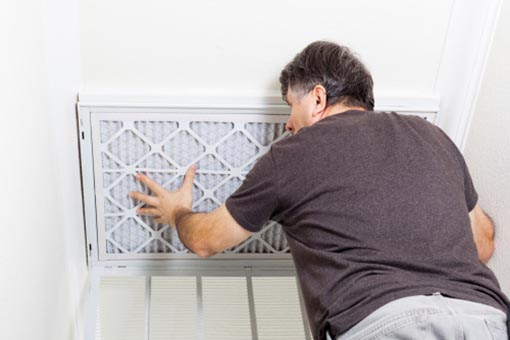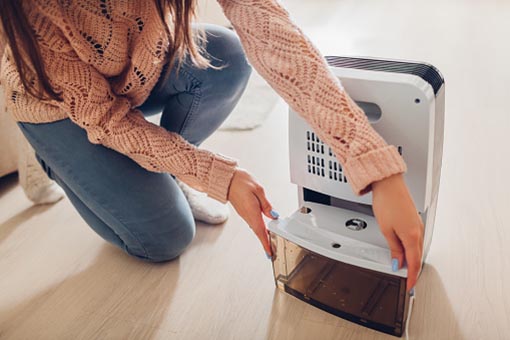HVAC Expert Shares Top Indoor Air Quality Mistakes Homeowners Struggle With
Expert Covers Indoor Air Quality Do’s and Don’ts
No matter the season, homeowners often tinker with their thermostat settings to keep their home comfortable. When the weather is pleasant during spring or fall, homeowners may choose to open their windows and depend on their HVAC system less. However, summer and winter may cause problems for indoor air quality (IAQ) because the more extreme temperatures require keeping the home sealed up—to keep the cool air in for summer and the heating in winter.
You’ll have an easier time securing good indoor air quality if you don’t make common mistakes that many homeowners make. McKinley Heating Service Experts Chief Operating Officer Cary Reed covered several of these errors and how to avoid them.
Not Changing Air Filters Regularly Enough

Replacing your air filters reduces the dust particles and airborne pollutants circulating in your home. For people with allergies, failure to change air filters consistently could exacerbate sneezing, watery eyes or even result in trips to the doctor. If you’re committed to using the best filter for your unique system and preferences, familiarize yourself with the Minimum Efficiency Reporting Value ratings system, commonly referred to as MERV, Reed suggested.
“It’s based on a 1 to 20 scale, so ratings in the center of that range tend to be better home filters,” Reed said. “And, if you haven’t always been on time with filter changes, I’d also advise a duct cleaning service too. Once that’s done, create a system to remind you when it’s time to change the filters.”
Neglecting HVAC Maintenance
Skipping preventive HVAC maintenance is often the first step toward jeopardizing your indoor air quality, Reed added. An annual tune-up ensures it functions efficiently and helps to lower the risk of needing major repairs down the line. In addition to checking all of the electrical components and coolant levels, tune-ups involve cleaning coils and heating elements that air passes through before making its way through vents into your home. When systems aren’t running like it should, dust or moisture continues to build up and eventually will become the starting point for unwanted air particles making it into your home.
Using Products that Lower the Quality of the Air Unknowingly

Some homeowners may be surprised to discover that common household products could be harming their health. In general, there are three ways in particular that homeowners could be worsening their indoor air quality without noticing. The first is by bringing in strong cleaners that release fumes and substances known as volatile organic compounds (VOCs). Whenever possible, select a green cleaner instead, Reed recommended.
“Strongly scented candles are an equally common air pollutant,” Reed said. “Even if you want a fresh smell in the home, this is it isn’t the best idea for air quality. I even advise against many air fresheners.”
Another way people tarnish their home’s air quality without knowing is with indoor plants that may trigger allergy symptoms. The Ogren Plant Allergy Scale (OPALS) is a simple 1 to 10 scale that is widely used to evaluate a plant’s potential for creating problems for allergy sufferers.
“There are many choices that are considered ideal indoor plants such as ferns, ivy, fig and yuccas, but these plants can also cause more allergy symptoms. It’s never a bad idea to do your research before picking indoor plants,” Reed said.
Ignoring Mold and Moisture Problems

High humidity in a home can induce mold and bacteria growth, which in turn can compromise indoor air quality. If you find a plumbing leak and water is collecting in the walls or another area of your home, fix it as early as you can, Reed said. Humidity is often when the growth of mold begins, particularly when you reside in a more humid part of the country.
When you notice a musty smell in the air, that’s a sign that moisture is trapped somewhere. Some homes also face issues with either too much or too little moisture in the air, which usually means evening out humidity levels with a humidifier or dehumidifier, Reed added.
Not Taking the Opportunity to Open Windows When the Weather Is Mild
While it’s certainly more tough to crack open the windows right in the middle of a cold snap, there are plenty of days throughout the year when cracking open a few windows to let in some fresh air is a good idea. Not only does it benefit in-home air quality overall, but it helps lower radon levels. Radon is a radioactive gas emitted as a natural byproduct from soil. In fact, purchasing an inexpensive detector to monitor gas levels is a prudent investment, especially when high radon exposure is responsible for roughly 21,000 lung cancer deaths annually, as reported by the CDC.
To get fresh air into your home when it’s cold outside, take advantage of midday temperature highs to open the windows in rooms and other spaces. During summer, use the early morning hours when it’s cooler to refresh your indoor air, Reed suggested.
Not Using Technology and Services that Can Have an Immediate Impact
Regardless of whether your home has “problem air” thanks to excessive humidity levels, mold, bacteria and other airborne contaminants, there are still lots of solutions, explained the HVAC pro.
Homeowners struggling with microorganisms often use germicidal UV light lamps, which are installed inside an HVAC system to kill bacteria, viruses and other microbes instantly. There are also ventilation systems that replace stagnant indoor air for fresh air, or whole-home air purifiers that can assure you enjoy a constant flow of fresh, clean air all year.
“An air quality professional can also run tests to help you fully understand the depth of the problem,” Reed said. “Similar to HVAC system maintenance, ignoring these problems only makes them more severe in the future. The good news is there are many ways to address air quality concerns.”
For details on how to reach peak indoor air quality, visit ServiceExperts.com/indoor-air-quality or request HVAC maintenance right away.

